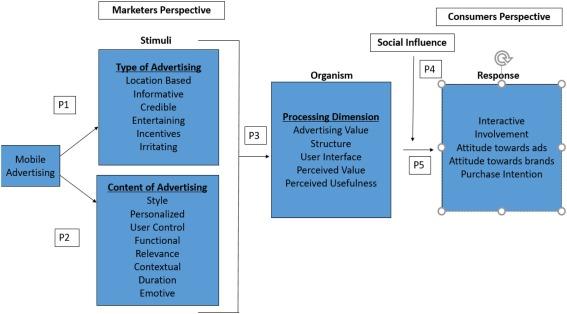How to Prepare Students for the Jobs of the Future: Essential Skills & Strategies
The landscape of employment is changing at lightning speed, driven by technological advancements, globalization, and shifting economic trends. As we look ahead, preparing students for the jobs of the future is not just about technology—it’s about fostering a wide range of skills, adaptability, and innovative thinking. in this article, we’ll explore the essential future-ready skills students need, practical planning strategies, and actionable insights for educators, parents, and institutions wanting to give learners the edge in tomorrow’s workforce.
Why Future-Proof Skills Matter More Than Ever
The World Economic Forum and leading labor market analysts agree: nearly 65% of primary school children today will work in jobs that don’t yet exist. Automation, artificial intelligence, and digitalization are transforming industries. Traditional curricula focused on rote learning are no longer enough; instead, students must cultivate a blend of technical know-how, critical thinking, creativity, and lifelong learning habits.
- changing Job Types: with the Fourth Industrial Revolution, demand is shifting from repetitive tasks to skillsets that complement technology.
- Global Competition: Remote work and digital collaboration broaden applicant pools and spur innovation—but also increase competition for top roles.
- Continuous Adaptation: lifelong learning and upskilling are essential as job requirements evolve faster than ever.
Essential Skills for the Jobs of the Future
Developing students for the future begins with understanding wich abilities are forecasted to be most valuable in tomorrow’s market. Here are the top future workforce skills that every student should develop:
1. Digital literacy
basic computer skills are no longer optional. Students must understand coding basics, data analysis, digital interaction, cybersecurity, and emerging technologies like artificial intelligence and machine learning.
2. Critical Thinking & Problem-Solving
Automated systems handle routine tasks,making human reasoning and complex problem-solving more vital. Students who can analyse situations, evaluate alternatives, and make informed decisions will thrive.
3. Creativity & Innovation
Innovation drives progress. Encourage students to think outside the box, design solutions, and create value—skills highly sought after in growth industries.
4. Emotional Intelligence (EQ) & Collaboration
The ability to work well with others, demonstrate empathy, and manage one’s own emotions fosters strong team dynamics and leadership potential.
5. Adaptability & Resilience
The fast-paced world means students must be comfortable with ambiguity and bounce back from setbacks—core traits for navigating everchanging career paths.
6. Communication Skills
Whether virtual or in person, clear writing, speaking, and listening skills are essential for effective collaboration and leadership.
7. Entrepreneurial Mindset
Encourage initiative, calculated risk-taking, and the ability to turn ideas into action.The gig economy and freelance culture value entrepreneurial energy.
Proven Strategies for Preparing Students for Future Careers
How can educators, parents, and policymakers nurture these competencies in meaningful ways? Consider these future workforce preparation strategies:
Integrate Future-Ready Skills into the Curriculum
- Project-Based Learning (PBL): Facilitate cross-disciplinary projects that tackle real-world challenges and encourage teamwork, design thinking, and research skills.
- STEM & STEAM Programs: Blend science, technology, engineering, (arts), and mathematics to spark curiosity and promote hands-on problem-solving.
- Digital Learning Platforms: Use e-learning, simulations, and coding platforms to teach digital skills in an engaging, interactive manner.
Foster a growth Mindset Culture
- Encourage students to embrace challenges and view mistakes as learning opportunities.
- Celebrate perseverance,curiosity,and resilience through positive feedback and mentoring.
Enhance Collaboration Between Education and Industry
- Internships & Apprenticeships: build partnerships with local businesses, tech startups, and global organizations for meaningful work experiences.
- Mentorship Initiatives: Connect students with industry professionals for guidance, networking, and real-world insight.
- Guest Lectures & Workshops: Invite experts to share trends, tools, and case studies from their fields.
Prioritize Soft Skills Development
- Institute regular modules or workshops on conflict resolution, leadership, and cultural awareness.
- Organize debate clubs, group discussions, and collaborative assignments to hone communication.
Emphasize Lifelong Learning and Self-Directed Education
- Teach students how to find reliable information, assess resources, and utilize online learning platforms (like Coursera, Udemy, or LinkedIn Learning).
- Encourage participation in hackathons, competitions, and MOOCs that align with individual interests.
Benefits of Preparing Students for the Jobs of the Future
- Increased Employability: A wider skillset enables students to access high-growth jobs across various industries, from data science to healthcare innovation.
- Greater confidence: Mastering new technologies and strategies cultivates a “can-do” attitude that empowers students to tackle unknowns.
- Improved Academic and Life Outcomes: Future-focused learning cultivates self-motivation, discipline, and mental agility—qualities that benefit all life areas.
Real-World case Studies
Case Study 1: Finland’s Integrative Approach
Finland’s education system is globally recognized for its forward-thinking pedagogy. by prioritizing phenomenon-based learning, students work on interdisciplinary projects rather than memorize isolated facts. for example, when learning about climate change, students explore the science, socio-economic factors, innovation solutions, and digital modeling, developing both knowledge and future-ready skills.
Case Study 2: google’s “20% Time” Model
at Google,employees receive 20% of their working hours to pursue creative projects. Adapting this model in schools—giving students time to explore personal interests or entrepreneurial ventures—encourages innovation and autonomous thinking, both highly valued in the future job market.
Practical Tips for Educators and Parents
- Stay Updated: Subscribe to educational technology and labor market reports to track emerging trends.
- Personalize Learning: Use adaptive learning tools to address individual strengths and interests,thus fueling engagement and deeper understanding.
- Encourage Collaboration Outside School: Support community projects, volunteer activities, and extracurricular clubs that build practical and social skills.
- Model Lifelong Learning: Demonstrate curiosity and self-development to inspire students to continue learning beyond school years.
Conclusion: Empowering Students for Future Workforce Success
Preparing students for the jobs of the future is a shared obligation. By focusing on essential skills, fostering innovative and adaptive mindsets, and seamlessly integrating real-world experiences into learning, we can equip the next generation not just to survive—but to thrive—in a changing world. Schools, educators, and families who embrace future-ready strategies are laying the groundwork for a resilient, confident, and employable workforce primed for the opportunities of tomorrow.

